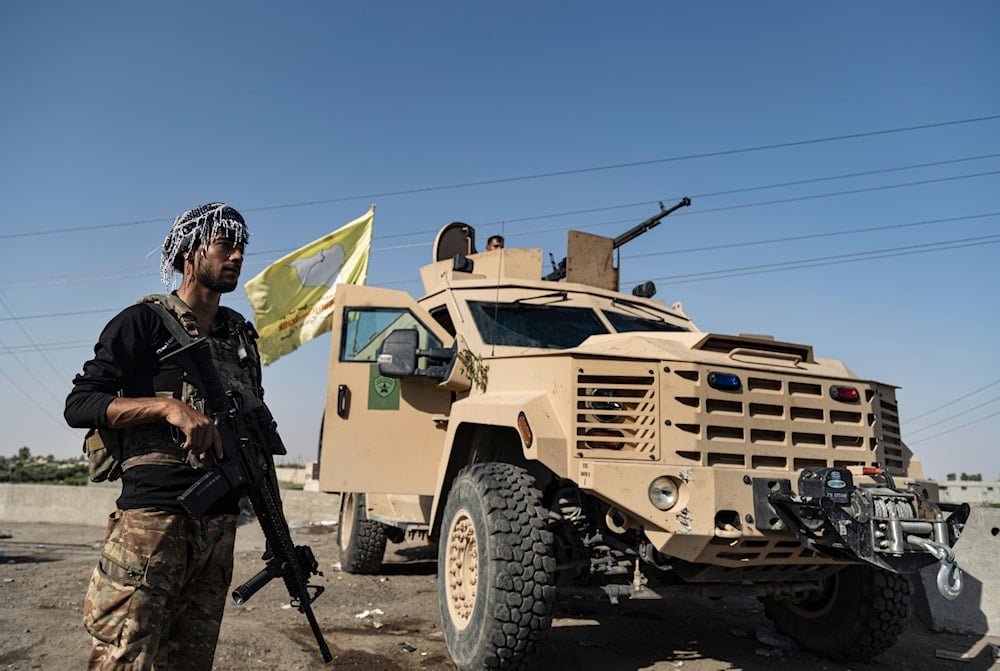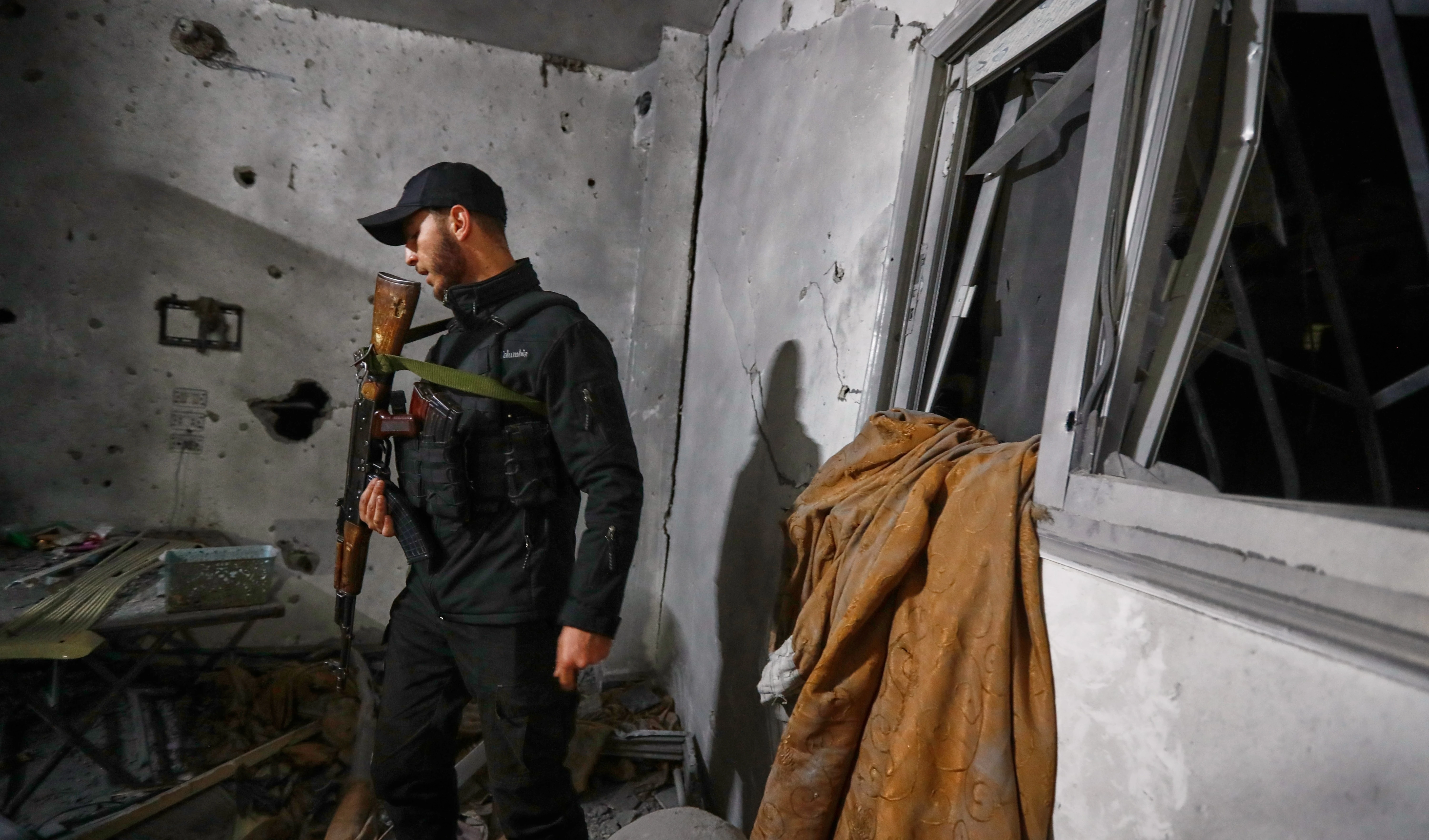ISIS cells, SDF clash in Deir Ezzor countryside
ISIS militants escalate operations in Deir Ezzor, targeting SDF and Asayish posts in a surge of attacks documented by the SOHR.
-

A US-backed Syrian Democratic Forces (SDF) fighter stands next to an armored vehicle at al-Sabha town in the eastern countryside of Deir Ezzor, Syria, Monday, Sept. 4, 2023 (AP)
Armed militants from ISIS cells targeted a security post belonging to the Syrian Democratic Forces (SDF) with a rocket-propelled grenade, prompting SDF units to return fire. The exchange triggered armed clashes between the two sides in the town of Dhiban in Deir Ezzor countryside, with no reports yet of casualties or damage.
In a separate incident, ISIS cells opened fire with machine guns on an Internal Security Forces (Asayish) checkpoint, leading to intermittent exchanges of fire in the town of Abriha in eastern Deir Ezzor, again with no immediate reports of casualties.
The group also attacked the Arqoub outpost, an SDF position, using medium-caliber weapons, followed by loud explosions heard in the town of Sousa in eastern Deir Ezzor countryside.
ISIS carried out 224 attacks in 2025
According to the Syrian Observatory for Human Rights, ISIS cells have carried out 224 attacks since the beginning of 2025 within areas controlled by the Autonomous Administration, including shootings, armed assaults, and bombings.
The Observatory documented 98 deaths in these attacks: 69 SDF fighters and allied forces, 13 ISIS members, 15 civilians, and one person cooperating with the SDF.
The distribution of attacks was as follows:
- Deir Ezzor: 193 operations resulted in the deaths of 51 military personnel, four ISIS members, 13 civilians, and one SDF collaborator. Another 68 people were injured, including 16 Asayish members, three SDF fighters, one woman, one ISIS member, three Self-Defense Forces members, and three civilians.
- Hasakeh: 16 attacks left 14 people dead, four ISIS members, eight Internal Security Forces personnel, and two SDF fighters, in addition to two wounded.
- Raqqa: 15 attacks killed 13 military personnel, eight soldiers, and five ISIS members, along with two civilians, and left 17 others wounded.
In mid‑January 2025, ISIS fighters ambushed SDF personnel in the rural areas of the Deir Ezzor countryside. On January 16, the group executed an SDF member whose body was dumped in the western countryside of Abu Khashab. Later, on January 19, further gunfire and ambushes near the Euphrates River reportedly left additional SDF fighters wounded and killed.
By September 25, 2025, the pace of attacks had risen sharply. On that day, ISIS cells killed six SDF members in the Deir Ezzor countryside, and a day later, on September 26, four more SDF fighters and one ISIS member were killed in an exchange of fire.
More recently, on November 10, 2025, ISIS claimed responsibility for an attack on an SDF patrol in the eastern countryside of Deir Ezzor, near the town of Sousa. The assault included a roadside explosive device that reportedly damaged a military vehicle and wounded several SDF members.
SDF cracks down on ISIS presence in Syria
Throughout 2025, the Syrian Democratic Forces, backed by the US-led coalition, intensified security operations targeting ISIS remnants across northeastern Syria.
On February 6, 2025, the SDF launched a large-scale sweep in the towns of al-Busayrah and al-Shuhail in Deir Ezzor countryside, detaining over 20 suspected ISIS members. During the operation, SDF units uncovered hidden weapon caches and seized explosives and communication equipment believed to be used in recent attacks. The campaign came in response to the spike in targeted killings and ambushes attributed to ISIS cells in the region.
On March 18, 2025, SDF special forces, supported by coalition surveillance and drones, conducted coordinated raids in rural areas of Hasakeh province.
Several ISIS operatives, including a figure accused of overseeing recruitment and financing for sleeper cells, were arrested. According to the SDF’s official statement, the operation aimed to dismantle key elements of ISIS's logistical infrastructure.

 4 Min Read
4 Min Read










